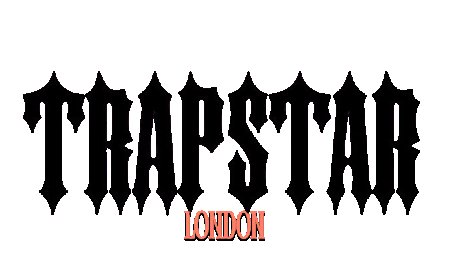What’s the Best Budgeting Strategy for Freelancers in the USA?

Freelancing offers incredible freedomflexible hours, the ability to choose projects, and the opportunity to be your own boss. However, with that freedom comes financial unpredictability. Unlike traditional employees with steady paychecks, freelancers often face fluctuating income, irregular payment schedules, and unexpected expenses.
To thrive as a freelancer in the USA, you need a solid budgeting strategy that ensures financial stability, helps you save for taxes, and prepares you for dry spells. In this guide, well explore the best budgeting techniques tailored for freelancers, so you can take control of your finances and build long-term security.
Why Budgeting is Crucial for Freelancers
Budgeting isnt just about tracking expensesits about creating a financial safety net. Heres why freelancers need a structured budget:
-
Irregular Income Your earnings may vary month to month, making it hard to predict cash flow.
-
Tax Obligations Unlike W-2 employees, freelancers must handle their own tax withholdings.
-
Emergency Preparedness Without employer benefits, you need savings for emergencies.
-
Retirement Planning No 401(k) match? You must proactively save for the future.
A well-planned budget helps you manage these challenges effectively.
Best Budgeting Strategies for Freelancers
1. The 50/30/20 Rule (Adjusted for Freelancers)
The classic50/30/20 rule(50% needs, 30% wants, 20% savings) works for salaried workers but needs tweaking for freelancers. Heres a modified version:
-
50% for Essentials Rent, utilities, groceries, healthcare, and business expenses.
-
20% for Taxes & Savings Set aside at least 20% for taxes (more if in a higher bracket) and emergency funds.
-
20% for Debt & Investments Pay off debt and invest in retirement (IRA, SEP IRA, or solo 401(k)).
-
10% for Personal Spending Leisure, dining out, and non-essential purchases.
This adjustment ensures you prioritize taxes and savings while covering necessities.
2. The "Pay Yourself First" Method
Freelancers often struggle with inconsistent income, making saving difficult. The"Pay Yourself First"strategy flips the script:
-
Set aside savings immediatelywhen you receive payment (before spending on anything else).
-
Automate transfersto a high-yield savings account or retirement fund.
-
Start with 20%(or more if possible) and adjust based on income fluctuations.
This method ensures you build savings consistently, even in low-earning months.
3. The "Separate Accounts" System
Mixing personal and business finances is a common freelancer mistake. Instead:
-
Open separate bank accountsfor business income, taxes, and personal expenses.
-
Allocate funds as follows:
-
Business Account (50%) For operational costs (software, subscriptions, marketing).
-
Tax Account (30%) For quarterly estimated tax payments.
-
Personal Account (20%) For living expenses.
-
This separation prevents overspending and ensures youre prepared for tax season.
4. The "Variable Income Budget" Approach
Since freelancers dont have fixed paychecks, avariable income budgetworks best:
-
Calculate your baseline expenses(minimum needed to survive each month).
-
Track your average monthly incomeover 6-12 months to find a realistic earning range.
-
Prioritize essentials first, then allocate extra income toward savings and debt.
-
Save surplus earningsin high-earning months to cover low-earning ones.
This method smooths out financial peaks and valleys.
5. The "Quarterly Tax Savings Plan"
Freelancers must payestimated quarterly taxes(April, June, September, January). Missing these can lead to penalties. Heres how to stay on track:
-
Set aside 25-30% of each paymentin a dedicated tax account.
-
Use IRS Form 1040-ESto estimate quarterly payments.
-
Work with an accountantto avoid underpayment or overpayment.
Proactive tax planning prevents year-end surprises.
Essential Budgeting Tools for Freelancers
To streamline your finances, leverage these tools:
1. Budgeting Apps
-
QuickBooks Self-Employed Tracks income, expenses, and tax estimates.
-
YNAB (You Need A Budget) Helps allocate every dollar intentionally.
-
Mint Monitors spending and savings goals.
2. High-Yield Savings Accounts
-
Ally Bank, Discover, or Capital One 360 Offer interest rates above traditional banks.
3. Invoicing & Payment Tools
-
FreshBooks Simplifies invoicing and expense tracking.
-
PayPal & Stripe Ensure timely payments from clients.
4. Retirement Accounts for Freelancers
-
SEP IRA Higher contribution limits than traditional IRAs.
-
Solo 401(k) Ideal for freelancers with no employees.
-
Roth IRA Tax-free withdrawals in retirement.
Common Budgeting Mistakes Freelancers Make
Avoid these pitfalls to stay financially secure:
?Not Tracking Expenses Small purchases add up. Use apps to monitor spending.
?Ignoring Taxes Under-saving leads to penalties. Always set aside tax money.
?No Emergency Fund Aim for 3-6 months worth of living expenses.
?Overestimating Future Income Stay conservative with earnings projections.
?Mixing Personal & Business Funds Keep accounts separate for clarity.
Final Thoughts: Building Long-Term Financial Stability
Freelancing offers incredible freedom, but without a solid budget, financial stress can overshadow the benefits. By implementing strategies like theadjusted 50/30/20 rule,paying yourself first, andusing separate accounts, you can manage irregular income, save for taxes, and build a secure future.
Remember, budgeting isnt restrictiveits empowering. It gives you control over your finances, reduces stress, and helps you achieve long-term goals. Start today, stay disciplined, and watch your freelance career thrive.
FSOBis here to support freelancers with expert financial insightsbecause your success is our priority.







































